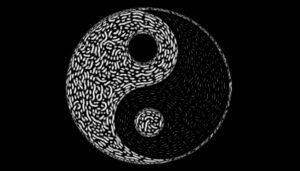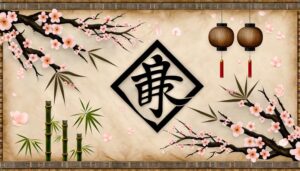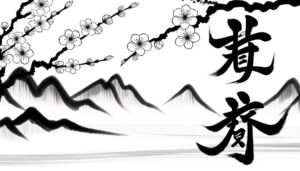What Is the Chinese Symbol for Strong Woman?
The Chinese symbol for a strong woman embodies resilience, independence, and empowerment, interwoven with both ancient traditions and contemporary values. Historically influenced by figures like Hua Mulan and Empress Wu Zetian, it illustrates the enduring reverence for female strength in Chinese society.
The symbol combines elements representing women and strength, encapsulated in elegant calligraphy, reflecting a balance of power and grace. It adapts to modern perspectives, celebrating gender equality and individual empowerment in various artistic and literary forms.
This enduring symbol continues to inspire, resonating across cultures and mediums, emphasizing the ongoing evolution of societal values. Discover its multifaceted significance and global impact.

Key Takeaways
- The Chinese symbol for a strong woman often combines characters for 'woman' (女) and 'strong' (强).
- Historically, figures like Hua Mulan and Empress Wu Zetian embody the symbol's essence.
- It represents resilience, independence, and multifaceted roles of women in Chinese culture.
- The symbol is used globally in women's rights movements, art, and media to signify empowerment.
- Chinese calligraphy techniques add cultural depth and aesthetic appeal to the symbol.
Historical Context
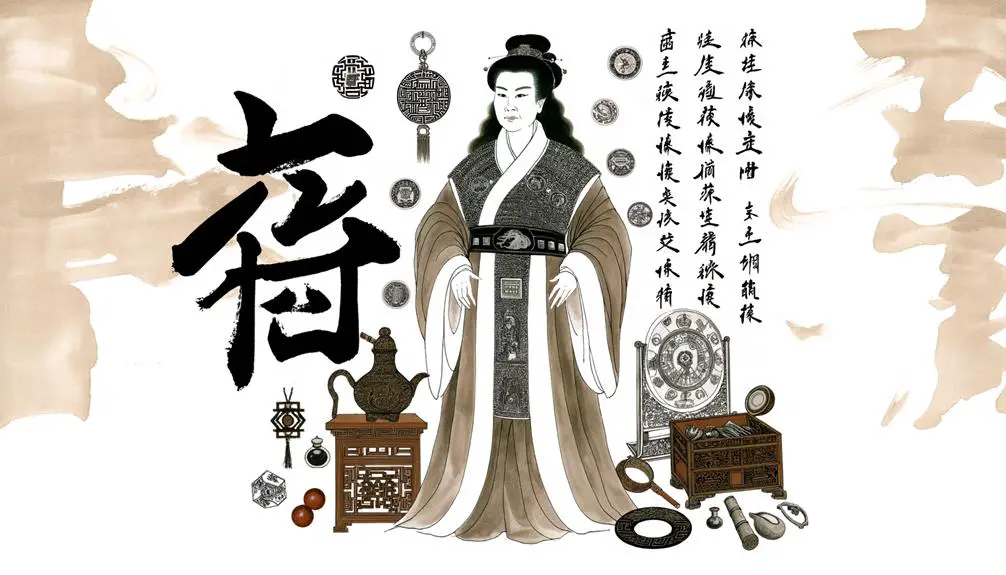
Tracing the origins of the Chinese symbol for 'strong woman' requires an exploration of the historical and cultural narratives that have shaped gender roles in Chinese society.
Historically, Confucianism has played a significant role in defining these roles, advocating a patriarchal structure where women were often relegated to domestic spheres. However, notable exceptions exist, such as the legendary female warriors Hua Mulan and Empress Wu Zetian, who defied conventional norms.
The evolution of the Chinese writing system, from oracle bones to modern script, also reflects changing societal values. Inscriptions and literature from various dynasties reveal an ongoing tension between prescribed roles and individual agency.
This historical context provides a foundation for understanding the symbol's contemporary relevance and its nuanced implications.
Symbolic Meaning
The symbolic meaning of the Chinese character for a strong woman intertwines historical context and cultural significance, reflecting both ancient traditions and modern interpretations.
Historically, the character has evolved, encapsulating societal values and notions of femininity and strength.
Culturally, it serves as a representation of resilience, independence, and the multifaceted roles women occupy within Chinese society.
Historical Context of Symbol
Examining the historical context of the Chinese symbol for a strong woman reveals its deep-rooted connections to key cultural narratives and societal values.
Historically, Chinese society has revered powerful female figures, such as the legendary Hua Mulan and Empress Wu Zetian. These figures embody resilience, leadership, and wisdom, qualities that the symbol encapsulates.
The Chinese language, rich in pictographic origins, often portrays strength through characters that combine elements of physical and moral fortitude. The symbol for a strong woman intertwines these aspects, reflecting an enduring veneration for women's strength in both mythological and historical contexts.
This symbol's evolution underscores the societal acknowledgment of women's pivotal roles, transcending mere physical power to encompass intellectual and emotional resilience.
Cultural Significance Explained
Understanding the cultural significance of the Chinese symbol for a strong woman requires an exploration of its multifaceted symbolic meanings within Chinese society. Historically, this symbol encapsulates both traditional and modern perspectives on femininity and strength.
In traditional contexts, it reflects virtues such as resilience, wisdom, and moral integrity, often embodied by legendary female figures. In contemporary settings, the symbol resonates with the empowerment of women, highlighting their roles in professional, social, and familial spheres. It bridges generational values, demonstrating how ancient ideals adapt to modern aspirations.
The symbol serves as a powerful emblem of gender equality and individual empowerment, illustrating the evolving yet enduring respect for women's strength in Chinese culture.
Calligraphy Techniques
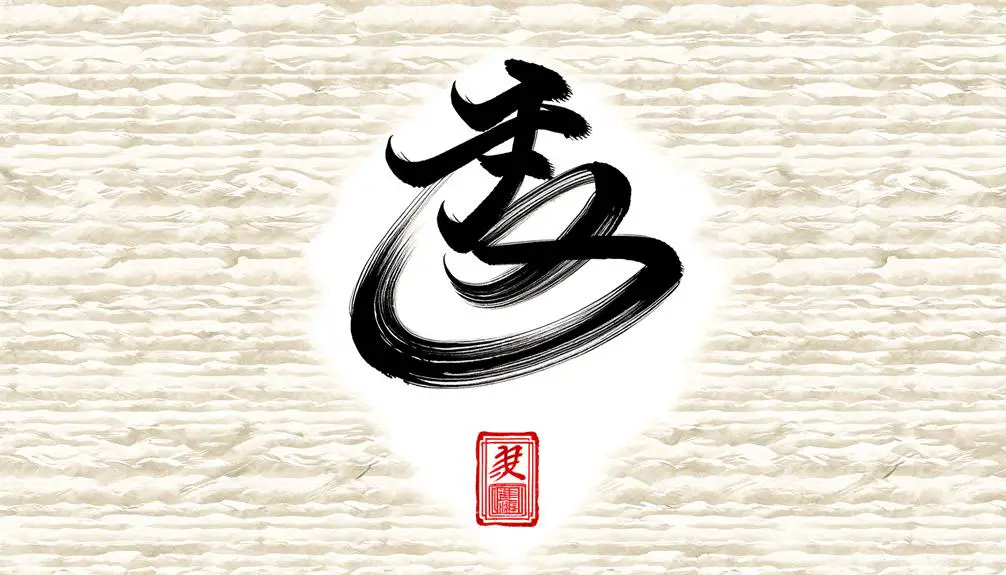
Mastering the intricate brush strokes and fluid movements essential for Chinese calligraphy demands both precision and a deep understanding of traditional techniques.
The process begins with selecting the right brush, which varies in size and flexibility, influencing the line's thickness and texture. Ink consistency is equally vital, requiring a delicate balance between water and ink stick to achieve the desired opacity.
The calligrapher's posture and grip are foundational, ensuring control over each stroke's speed and pressure. Practice of foundational strokes—horizontal, vertical, and curved—lays the groundwork for more complex characters.
Every motion must be deliberate, with a focus on rhythm and flow, echoing the aesthetics of balance and harmony inherent in Chinese artistic traditions.
Cultural Significance
The meticulous artistry of Chinese calligraphy not only showcases technical skill but also embodies profound cultural significance, particularly in characters representing concepts such as 'strong woman.'
In Chinese culture, strength in women is revered and often symbolized through characters that integrate elements of resilience and virtue. The character for 'strong woman' is a testament to historical narratives where women's fortitude played vital roles in familial and societal structures.
This cultural reverence is reflected in various literary works, folklore, and historical accounts, where strong female figures are celebrated. By encapsulating these attributes in calligraphy, the characters transcend mere representation, serving as enduring symbols of empowerment and respect within Chinese society.
Artistic Representations
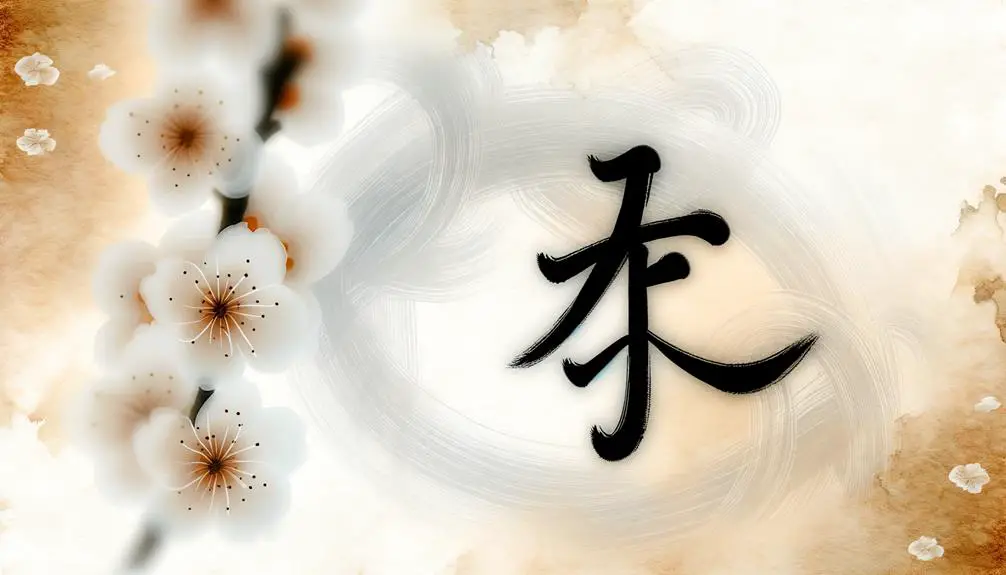
In artistic representations, the Chinese symbol for 'strong woman' is often depicted with intricate brush strokes that highlight both its aesthetic appeal and its deeper cultural connotations. The meticulous artistry involved in creating these symbols serves not only to beautify the character but also to evoke the strength and resilience inherent in its significance.
These artistic renditions are frequently seen in traditional calligraphy, where the fluidity and precision of each stroke are paramount. Additionally, the symbol often appears in various forms of visual art, including paintings and sculptures, where artists employ different mediums to express its importance.
The elegance and power embodied in these representations reflect the respect and admiration for strong women within Chinese culture.
Modern Interpretations
In contemporary society, the Chinese symbol for a strong woman has evolved to encompass modern feminine ideals, reflecting a broader range of personal and professional achievements. This transformation is indicative of shifting cultural perceptions and the increasing recognition of women's multifaceted roles.
Today, the symbol serves not only as a traditional emblem but also as a contemporary representation of empowerment and resilience.
Evolving Feminine Ideals
Modern interpretations of the Chinese symbol for a strong woman reflect evolving feminine ideals that challenge traditional gender roles and celebrate empowerment. Contemporary society increasingly values traits such as resilience, independence, and leadership in women, diverging from historical expectations of submissiveness and domesticity.
This shift is mirrored in how the symbol is used in various media, literature, and public discourse, often highlighting women's contributions in professional, political, and social spheres. The reinterpretation underscores a broader cultural movement toward gender equality, where strength is not solely a masculine attribute but a universal human quality.
These evolving ideals foster an environment where women's achievements are recognized and celebrated, contributing to an inclusive narrative of strength and capability.
Cultural Symbolism Today
The contemporary adoption of the Chinese symbol for a strong woman reflects its multifaceted role in promoting gender equality and redefining societal norms.
Today, this symbol is increasingly used in various media and personal expressions to challenge traditional gender roles and advocate for women's empowerment. In fashion, art, and digital platforms, it serves as an emblem of resilience and autonomy.
Its integration into global feminist movements illustrates a cross-cultural resonance, bridging Eastern and Western ideologies. The symbol's modern interpretations underscore a collective aspiration towards inclusivity and respect for women's strength in diverse contexts.
Its cultural symbolism today extends beyond mere representation, actively contributing to the discourse on gender dynamics and social justice.
Empowerment Through Symbolism
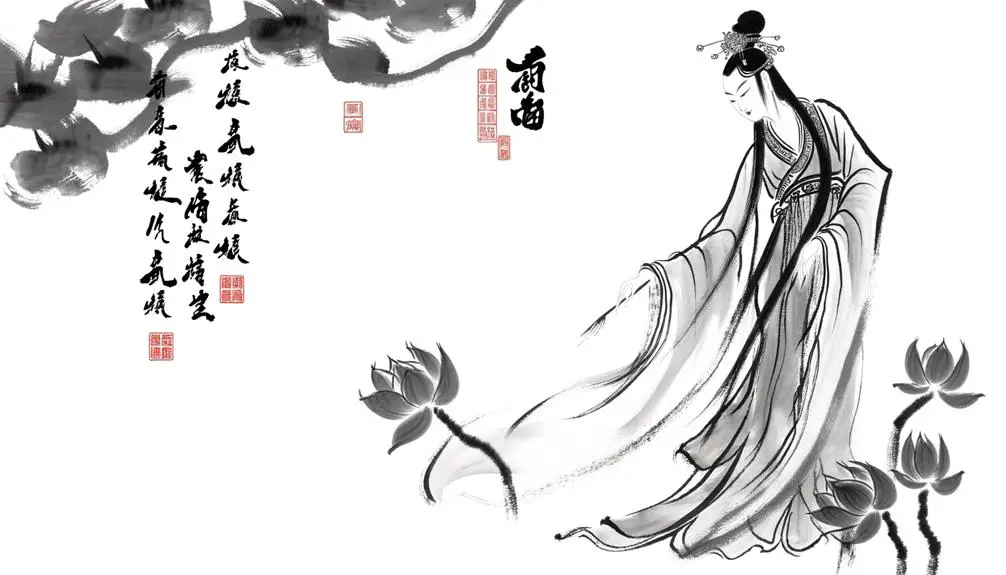
Drawing on the rich tapestry of Chinese characters, the symbol for a strong woman transcends mere linguistic function to become a powerful emblem of female empowerment. Historically, Chinese characters carry profound cultural and philosophical weight, encapsulating values and societal norms.
The character for a strong woman (女强) combines 'woman' (女) and 'strong' (强), symbolizing attributes such as resilience, independence, and inner strength. This confluence of meanings encourages women to embrace their potential and assert their significance in various spheres of life.
Global Influence
Across various cultures, the Chinese symbol for a strong woman has gained significant traction as a universal emblem of female empowerment. This adoption is not limited to East Asia but extends globally, influencing diverse cultural contexts. Its appeal lies in its nuanced representation of strength, resilience, and grace. The symbol has been incorporated into various media, including fashion, literature, and social campaigns, reflecting its adaptability and resonance.
| Region | Cultural Impact | Examples of Usage |
|---|---|---|
| North America | Women's rights movements | Apparel, tattoos, social media |
| Europe | Artistic and literary expressions | Art exhibitions, poetry |
| Latin America | Grassroots empowerment initiatives | Community murals, educational tools |
This widespread embrace highlights the symbol's potent, cross-cultural influence in advocating for gender equality and recognition.
Personal Stories

Building on its global influence, the Chinese symbol for a strong woman also finds profound resonance in personal narratives, where individuals recount its significance in their journeys toward empowerment.
Many women have adopted this symbol, integrating it into their lives as a source of inspiration and strength. For instance, some have it tattooed as a daily reminder of resilience, while others incorporate it into their art or literature as a reflection of their inner fortitude.
These personal stories emphasize the symbol's role in fostering a sense of identity and community among women. By embracing this emblem, individuals not only honor their cultural heritage but also fortify their personal resolve, demonstrating the symbol's enduring relevance in contemporary society.
Conclusion
The exploration of the Chinese symbol for a strong woman reveals a tapestry woven with historical depth, symbolic resonance, and artistic elegance.
This emblem, rendered with the precision of calligraphy and imbued with cultural significance, acts as a beacon of empowerment.
Its modern interpretations and global influence demonstrate a bridge between ancient wisdom and contemporary identity.
Such a symbol, akin to a timeless artifact, continues to inspire and embody the strength of women across the world.


